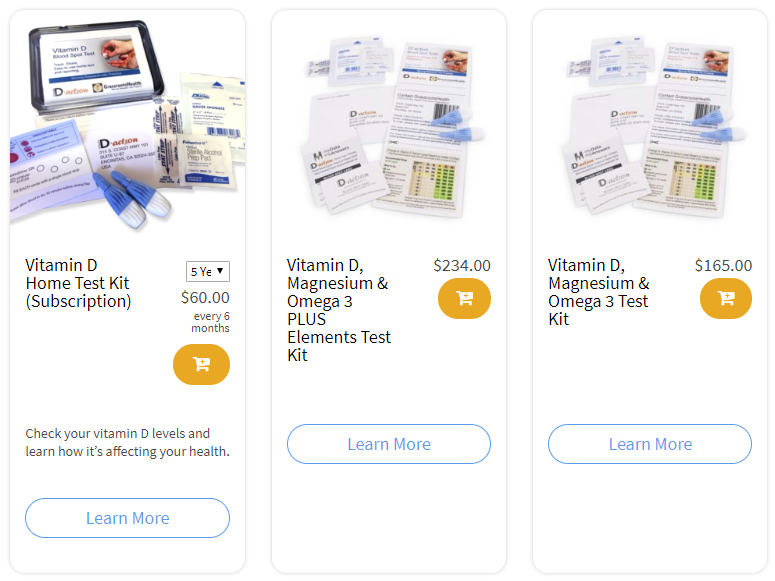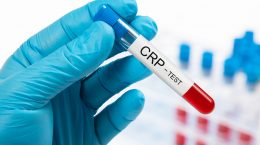Published on February 14, 2020
Cardiovascular disease (CVD), which includes heart disease, stroke, and high blood pressure, is the number one killer of American women and men, and it is a leading cause of serious illness and disability. Essential nutrients such as magnesium, vitamin D, and omega-3s play a large part in maintaining a healthy heart.
There are a number of ways in which each of these nutrients may help prevent CVD – see the links below to learn more!
Magnesium
 Over 45% of the US population consumes less than the average daily requirement of magnesium, thus are very likely deficient. This widespread deficiency may be contributing to the rise in many health problems, including CVD, with research showing its relationship to conditions such as atrial fibrillation, stroke, high blood pressure and heart failure. See the articles below for more information on magnesium and heart health.
Over 45% of the US population consumes less than the average daily requirement of magnesium, thus are very likely deficient. This widespread deficiency may be contributing to the rise in many health problems, including CVD, with research showing its relationship to conditions such as atrial fibrillation, stroke, high blood pressure and heart failure. See the articles below for more information on magnesium and heart health.
Impact of Magnesium on Cardiovascular Disease
Magnesium May Lower the Risk of Atrial Fibrillation
Comparing magnesium supplementation with statin drugs
Omega-3s
 With over 8,000 research papers available on heart health and omega-3s, Valentine’s Day leads us to this topic. You may have bought your valentine a present, but have you done everything to minimize the risk of heart disease for both you and your valentine?
With over 8,000 research papers available on heart health and omega-3s, Valentine’s Day leads us to this topic. You may have bought your valentine a present, but have you done everything to minimize the risk of heart disease for both you and your valentine?
Have you ever had your Omega-3 Index tested? If so, was it in the recommended range — or like 85% of our participants who have tested, was it below? Check today if you haven’t yet, and read the articles below for more information on omega-3s and why they are so important to heart health.
Heart Function Significantly Improved with Omega-3s
Why target an Omega-3 Index of 8-12%?
Higher Omega-3 Index associated with lower mortality
Omega-3s May Prevent High Blood Pressure
Reduced Triglyceride Levels with Omega-3s
Vitamin D
 It appears that 20-50% of CVD could be prevented if everyone had an adequate level of vitamin D (40 – 60 ng/ml)! Vitamin D has been associated with lower blood pressure, reduced risk of arterial stiffness, diabetes and insulin resistance, and maintaining glucose regulation and a healthy lipid profile. See the articles below for more on vitamin D and heart health.
It appears that 20-50% of CVD could be prevented if everyone had an adequate level of vitamin D (40 – 60 ng/ml)! Vitamin D has been associated with lower blood pressure, reduced risk of arterial stiffness, diabetes and insulin resistance, and maintaining glucose regulation and a healthy lipid profile. See the articles below for more on vitamin D and heart health.
Low vitamin D and high CRP associated with cardiovascular disease
Peripheral arterial disease associated with low vitamin D
Hypertension risk lower with higher vitamin D status
Is your heart getting enough of these important nutrients?
Make sure you know your vitamin D level, and take steps to keep it within a target of 40-60 ng/ml or 100-150 nmol/L! Through GrassrootsHealth Nutrient Research Institute, you can also test your essential elements magnesium, copper, zinc and selenium, toxins such as lead, mercury and cadmium, as well as your omega-3 levels, inflammation levels and thyroid stimulating hormone (TSH) level. Find out your levels today! Log on to the test selection page (click the link below) to get your tests and see for yourself if your levels can be improved.
Make sure you track your results before and after, about every 6 months!
Click Here to Access the Test Page
How can I track my nutrient intake and levels over time?
To help you track your supplement use and nutrient levels, GrassrootsHealth has created the Personal Health Nutrient Decision System called
For each specific supplement, you can track what days you take it, how much, and many other details. This will help you know your true supplemental intake and what patterns of use work for you to reach and maintain optimum nutrient levels. Check it out today!








